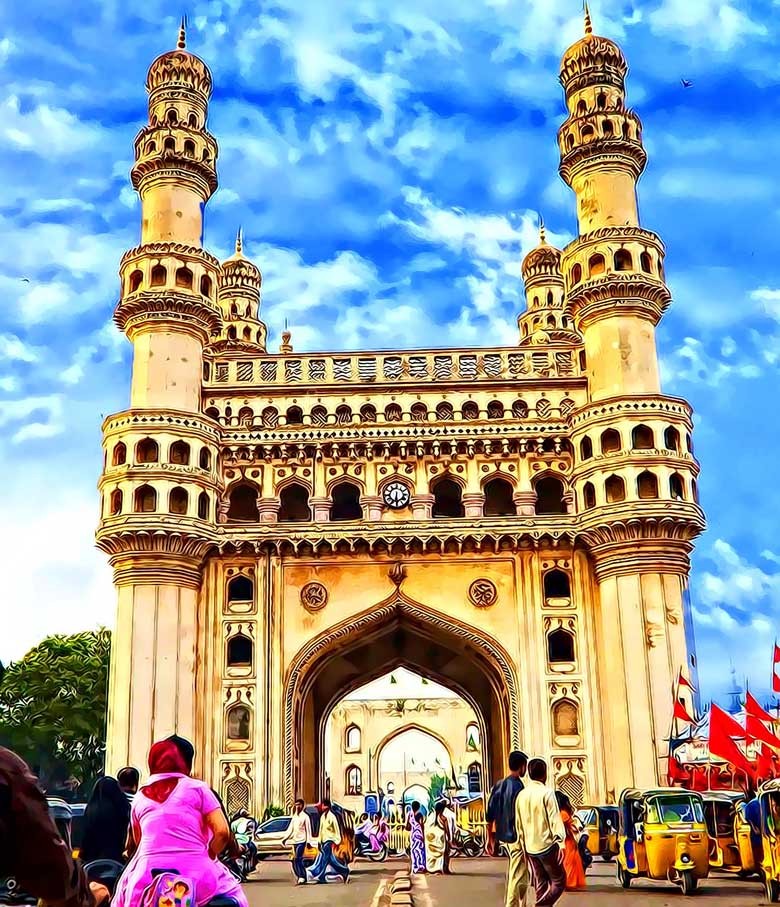Concentrate on Hyderabad if you’re passing through Andhra Pradesh. Most of the city’s interesting sights are in the Old Town, making it easy to walk around or take short auto-rickshaw trips. Don’t bother with Hyderabad’s twin city, Secunderabad, which, aside from its railway station, has little to offer the traveler. If you have the stamina and will be heading south to Madras, consider a detour to the temple town of Tirupati.
When to Tour Hyderabad
Winter—mid-October through March—is the ideal time to visit, as the weather is dry and the temperature rarely climbs higher than 72°F (22°C). Evenings can even be chill, requiring a sweater. In summer the temperature soars up to 104’12 (40°C), cooling down just a little during the monsoon rains that fall from June through September.
A Good Tour to Sightseeing Places in Hyderabad
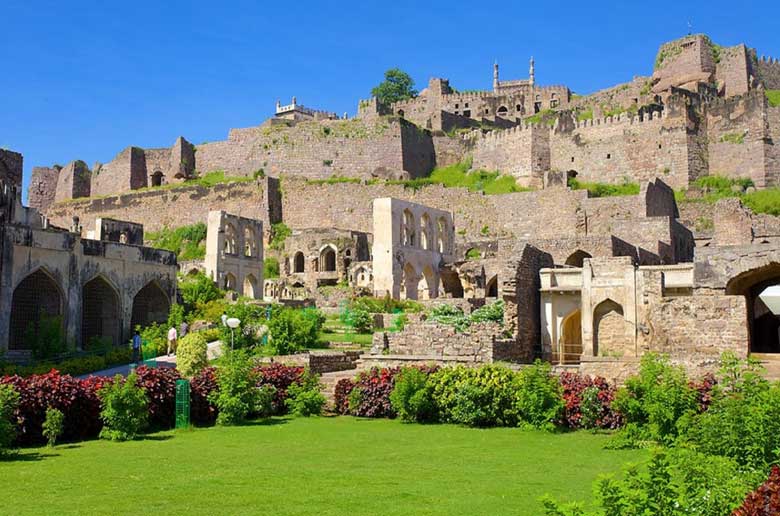
Golconda Fort Hyderabad
Make your first stop Golconda Fort, the original defensive settlement of Hyderabad. You can take an auto-rickshaw there, but to see it properly requires walking up a steep hill to its summer palace, and that is better done before the noonday sun heats down. From the fort go over to the nearby Qutab Shahi Tombs, the palatial tombs of the Muslim rulers, which are also better seen and photographed before the sun is overhead. From here it’s a 7-km (4V2-mi) auto-rickshaw ride to the center of the Old Town, whose landmark is Charminar, with its magnificent minarets. All around Charminar are bustling bazaars and close by is Laad Bazaar with rows of shops selling glass bangles, perfume, and lacquer. About 330 ft south of Charminar is India’s second-largest mosque, the Mecca Masjid. The Falaknuma Palace is another 2 km (1 mi) south. The Solar Jung Museum is north of Charminar but still on the south side of the Musi River. In the evening, you may want to return to Golconda Fort to attend the sound-and-light show, especially if you’re here on a Wednesday or Sunday, when the show is in English.
Timing
This route can be covered in one extremely full day, but its best split into two days. On account of Hyderabad’s strong Muslim influence, the museums and some shops may be closed on Fridays. Non-Muslims are discouraged from visiting mosques on Fridays.
6 Most Popular Sightseeing Places in Hyderabad
#1. Charminar
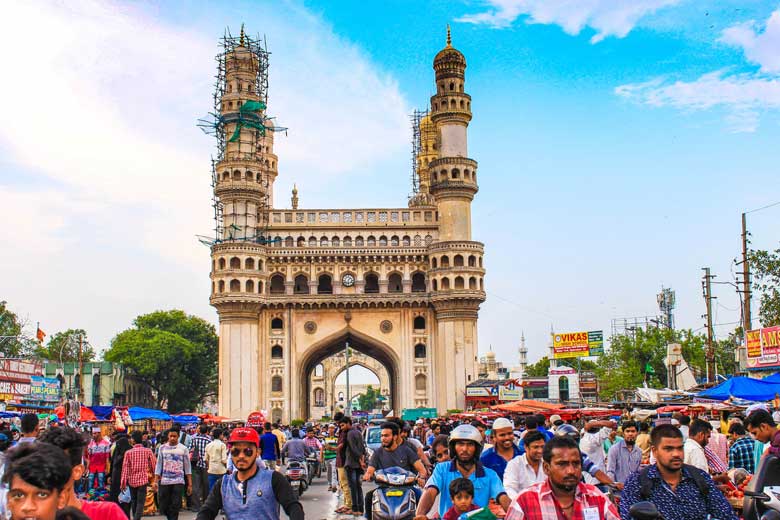
Charminar Hyderabad
South of the Musi River, near the impressive Osmania Hospital and High Court buildings, you enter the Charkaman area in the heart of the Old City between four (char) great gates (kaman). Within these gates you’ll find not only Hyderabad’s famed pearl and bangle markets, but also the striking Charminar, an imposing granite edifice built by Mohammed Quli Qutab Shah in 1591 to appease the forces of evil and protect this new city from plague and epidemic. The arches, domes, and minarets show Islamic influence, while much of the ornamentation is Hindu in style.
#2. Falaknuma Palace
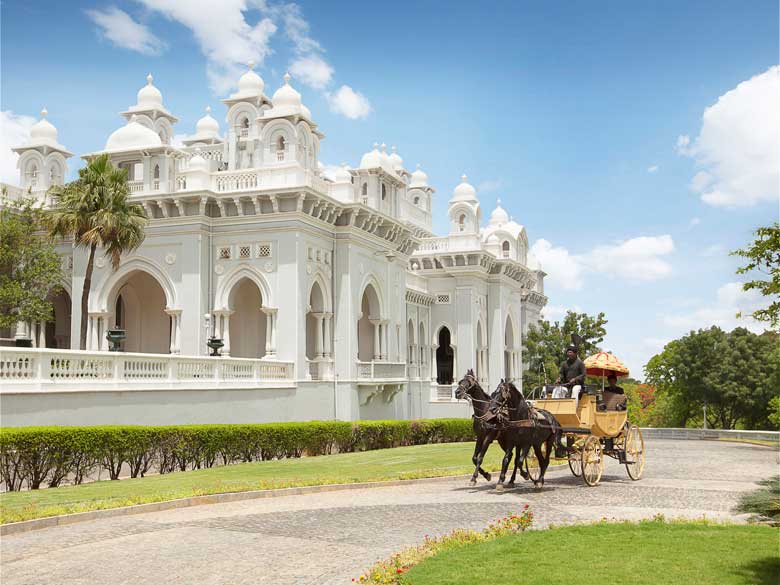
Falaknuma Palace Hyderabad
This stunning late-19th-century palace built by a Paigah noble is not open to the public, but it may one day be trans-formed into a luxury hotel by the Taj Group, along with its peaceful Japanese gardens. People do often walk the 20 minutes south of Charminar, however, on the off chance that they’ll be allowed to marvel at the stained-glass windows, carved ceilings, fine Italian marble staircases, and general 19th-century opulence that took nine years to create. Acquired by the sixth nizam in 1897, the palace has hosted both Indian and European royalty.
#3. Golconda Fort
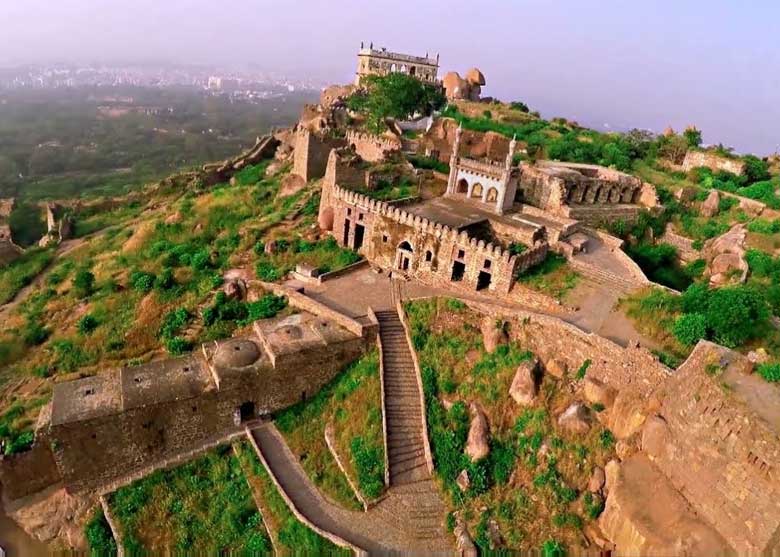
Golconda Fort Hyderabad
A clap at the gate of this fort echos clearly up to its summer palace, high on the hill just outside the city. These are the ruins of what was once the state capital: It often sheltered whole communities under siege for months, and though tremendously worn by time and war, it tells stories in crumbling stone. The fort only fell to one siege, but that siege was disastrous. After eight months of bottling up the fort, Aurangzeb—with the assistance of a traitor who opened what is now called the Victory Gate—sent his troops storming in. In the belief that there was hidden gold here, Aurangzeb ordered the roofs of all palaces ripped off; so, 300 years later, only the walls stand amid the weeds and moss. The excellent, nightly sound-and-light show is performed in English every Wednesday and Sunday.
Mecca Masjid. India’s second-largest mosque, located in the Charka-man area in the center of the old part of town (south of Charminar), can hold 10,000 worshipers. Non-Muslims are welcome except at prayer time, which includes, of course, all day Friday. Some bricks here were made with earth brought from Mecca in 1618. The nizams’ tombs line the left side of the courtyard.
#4. Qutab Shahi Tombs
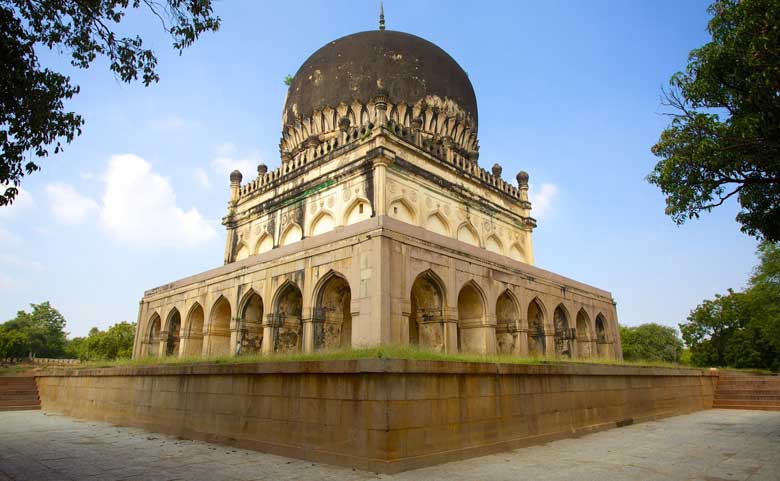
Qutab Shahi Tombs Hyderabad
Each of the seven distinctive tombs of the Qutab Shahi dynasty has a square base surrounded by pointed arches. The seventh is unfinished because Shah Abdul Hassan was rudely interrupted in the building of his tomb by Aurangzeb, who defeated him and captured the Golconda Fort.
#5. Salar Jung Museum
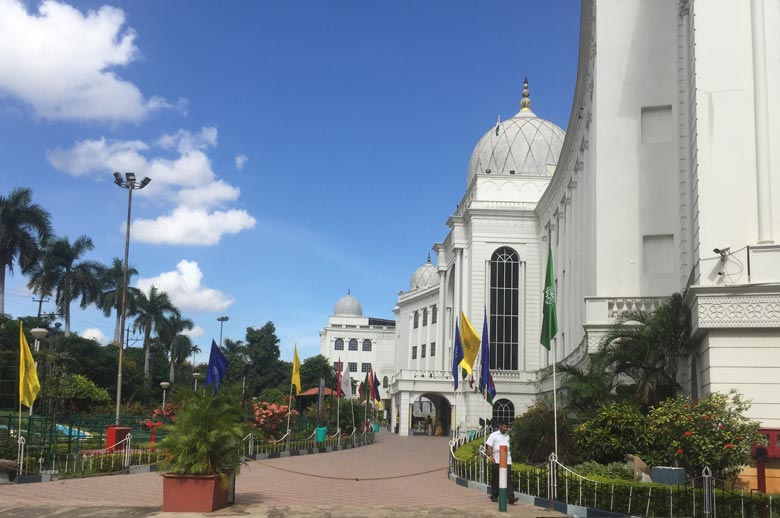
Salar Jung Museum Hyderabad
When you see the wealth of this collection, you might be astonished to learn that it all belonged to one man: Mir Yusuf Ali Khan Salar Jung III, who for a short time was prime minister. Thirty-five thousand items are crammed into 35 rooms. The fantastic Chola sculptures, European glass, Chinese jade, jeweled weapons, and modern Indian paintings are displayed with little information, but they’re well worth a look anyway.
#6. Tank Bund Road
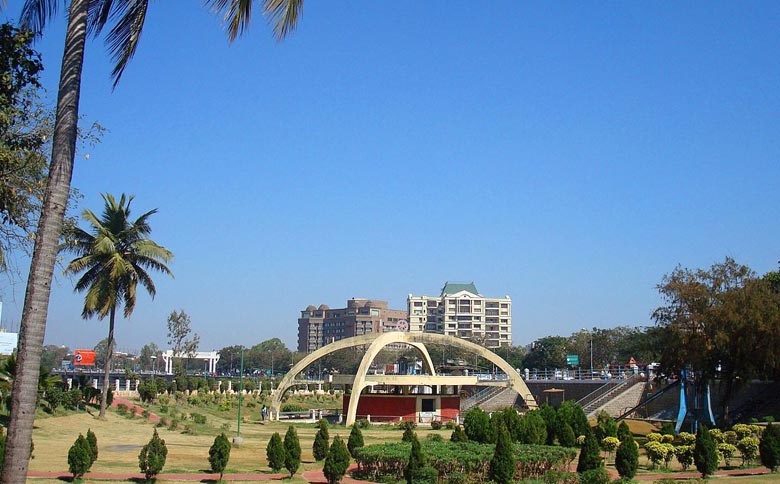
Tank Bund Road Hyderabad
A showpiece of Hyderabad, Tank Bund is a promenade across the top of the dam that holds back the waters of Hussain Sagar Lake (4 mi by V mi), a dominant feature of the city. Many hotels are positioned so that their rooms overlook the lake, which is often used as a venue for sporting events. The road is lined with statues of the state’s native sons, and a stunning sight from here is the 52-ft-high,:350-ton monolithic statue of Lord Buddha in the middle of the lake.
For More tourist information on Most Popular Sightseeing Places in Hyderabad call Swan Tours, A leading Travel agent in India.
